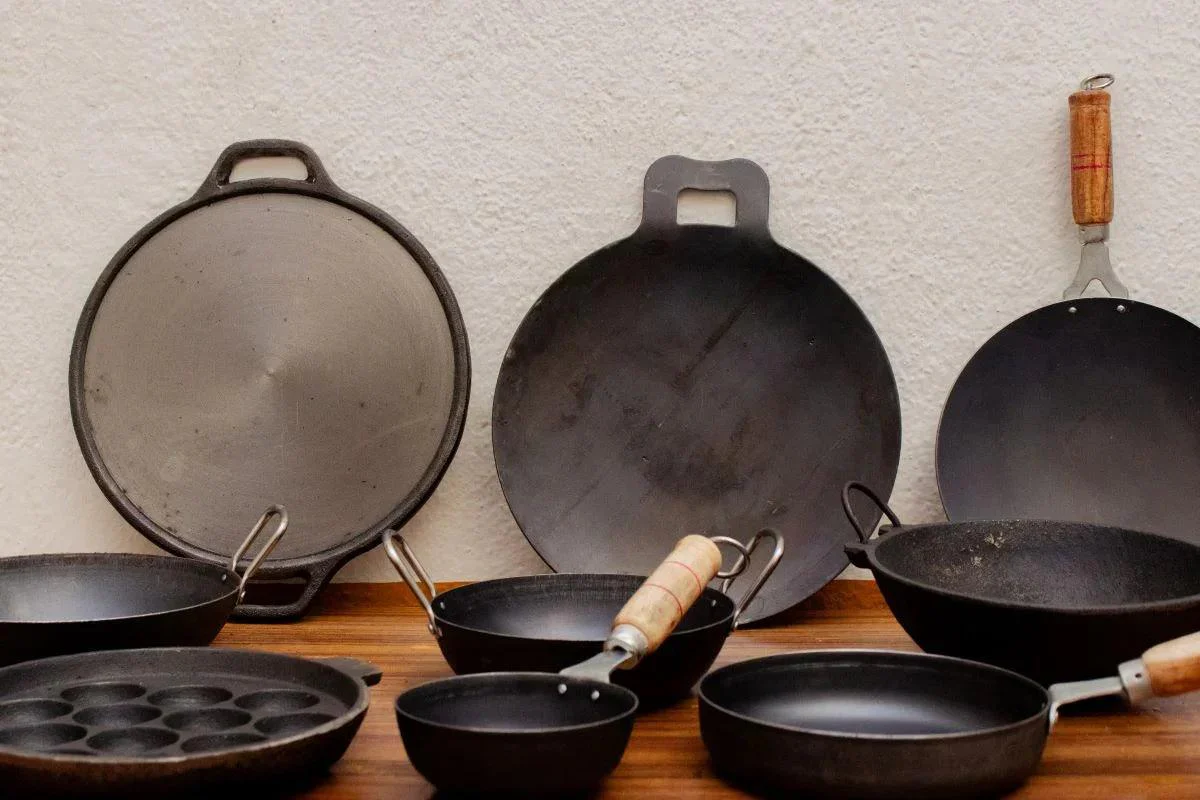Cast iron cookware has long been a staple in kitchens around the world. Its durability, versatility, and unmatched heat retention make it a favorite for both professional chefs and home cooks alike. Whether you’re searing a steak or baking bread, a good cast iron pan can elevate your cooking. However, to enjoy these benefits for the long haul, proper maintenance is key.
Let’s dive into the advantages of cooking with cast iron and how to keep your skillet in top shape for years to come.
The Benefits of Cooking with Cast Iron
1. Unmatched Durability
One of the biggest perks of cast iron cookware is its longevity. A well-maintained cast iron pan can last for decades, and many are even passed down from one generation to the next. Unlike non-stick pans that lose their coating or warp over time, cast iron can take a beating and still perform like new after a little care.
2. Superior Heat Retention
Cast iron is a master at retaining heat. Once it’s hot, it stays hot, providing even cooking across the entire surface. This makes it perfect for searing meats, as it creates that beautiful crust without rapidly cooling down. It’s also excellent for slow-cooked dishes that require consistent, even heat over a longer period.
Whether you’re cooking on the stovetop or moving your pan to the oven, cast iron provides the versatility that other types of cookware often lack.
3. Natural Non-Stick Properties
A properly seasoned cast iron pan can be just as non-stick as any modern non-stick pan—without the need for chemicals like Teflon. As you continue to cook with your cast iron, especially using fats or oils, a natural non-stick layer develops over time. This “seasoning” not only makes cooking easier but also adds to the flavor and character of the pan.
4. Versatility in Cooking
Cast iron cookware isn’t limited to the stovetop. It’s oven-safe, can handle high temperatures, and can even be used on a grill or open flame. You can bake, fry, sear, sauté, or braise in it, making it one of the most versatile pieces of cookware in any kitchen. Whether you’re whipping up a stir-fry or slow-cooking a stew, your cast iron can handle it.
How to Maintain Cast Iron
While cast iron offers many benefits, maintaining it requires some attention. But don’t worry—it’s easier than it seems once you know the basics. Let’s walk through the essential steps to keep your cast iron in perfect condition.
1. Seasoning Your Cast Iron Pan
Seasoning is what gives cast iron its natural non-stick surface. Seasoning is simply the process of bonding a thin layer of oil to the surface of the pan through heat. This forms a protective barrier and helps prevent rust.
How to season:
- Start by cleaning the pan (more on this below).
- Rub a thin layer of oil (vegetable, canola, or flaxseed oil) over the entire surface, inside and out.
- Place the pan upside down in a preheated oven at around 450°F (230°C) for one hour. You might want to place aluminum foil on the rack below to catch any drips.
- Turn off the oven and let the pan cool inside before removing it.
Repeat this process a few times when you first get your pan, or whenever you notice food sticking more than usual. Every time you cook with oil, you’re also naturally adding to the seasoning, so the more you use your pan, the better it gets.
2. Cleaning Your Cast Iron Pan
Cleaning cast iron can seem intimidating, but it’s straightforward once you get the hang of it. Here’s what to do—and what not to do:
- Avoid Soap (Most of the Time): Soap can strip the seasoning, so it’s best to skip it unless absolutely necessary. Instead, use hot water and a stiff brush or scraper to remove food residue. If you do use soap, keep it minimal and be prepared to re-season the pan.
- No Soaking: Never leave your cast iron pan soaking in water, as it can lead to rust. Always clean it as soon as possible after cooking.
- Dry Immediately: After washing, dry your cast iron completely. Leaving any moisture can lead to rust. For extra protection, place the pan on the stovetop over low heat to evaporate any remaining moisture.
- Lightly Oil After Cleaning: Once dry, rub a thin layer of oil over the pan to maintain its seasoning and prevent rust.
3. Dealing with Rust
If you accidentally let your cast iron rust, don’t panic—it’s fixable. Light rust can usually be scrubbed off with a stiff brush or steel wool. Once the rust is gone, rinse, dry, and re-season the pan. For more severe rusting, you might need to scrub the entire pan down and go through a more thorough re-seasoning process.

